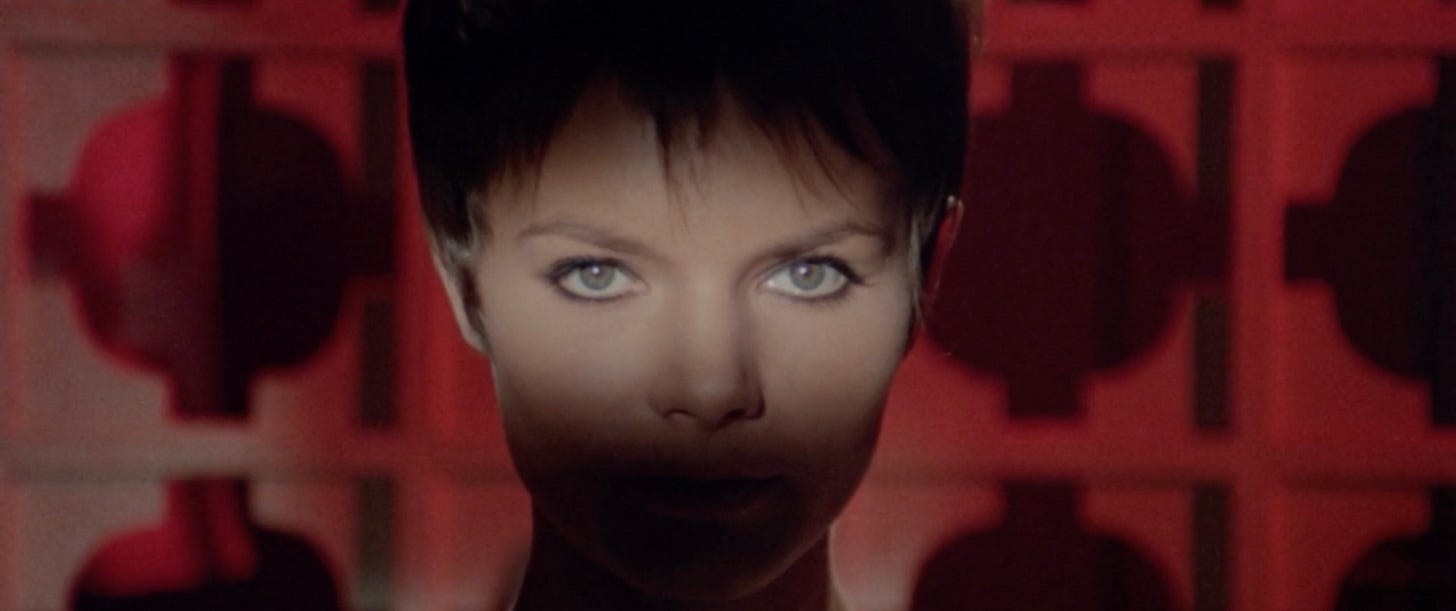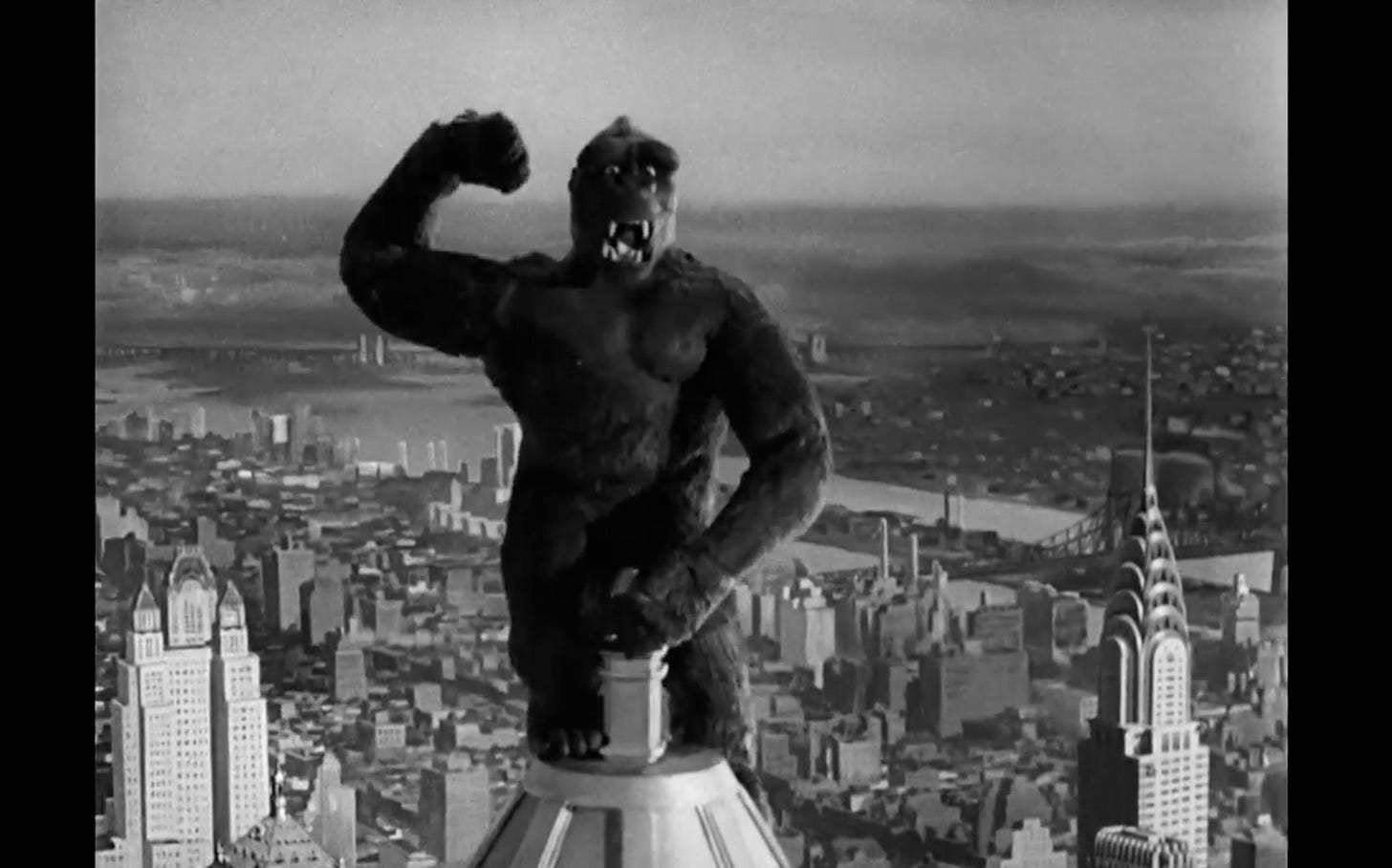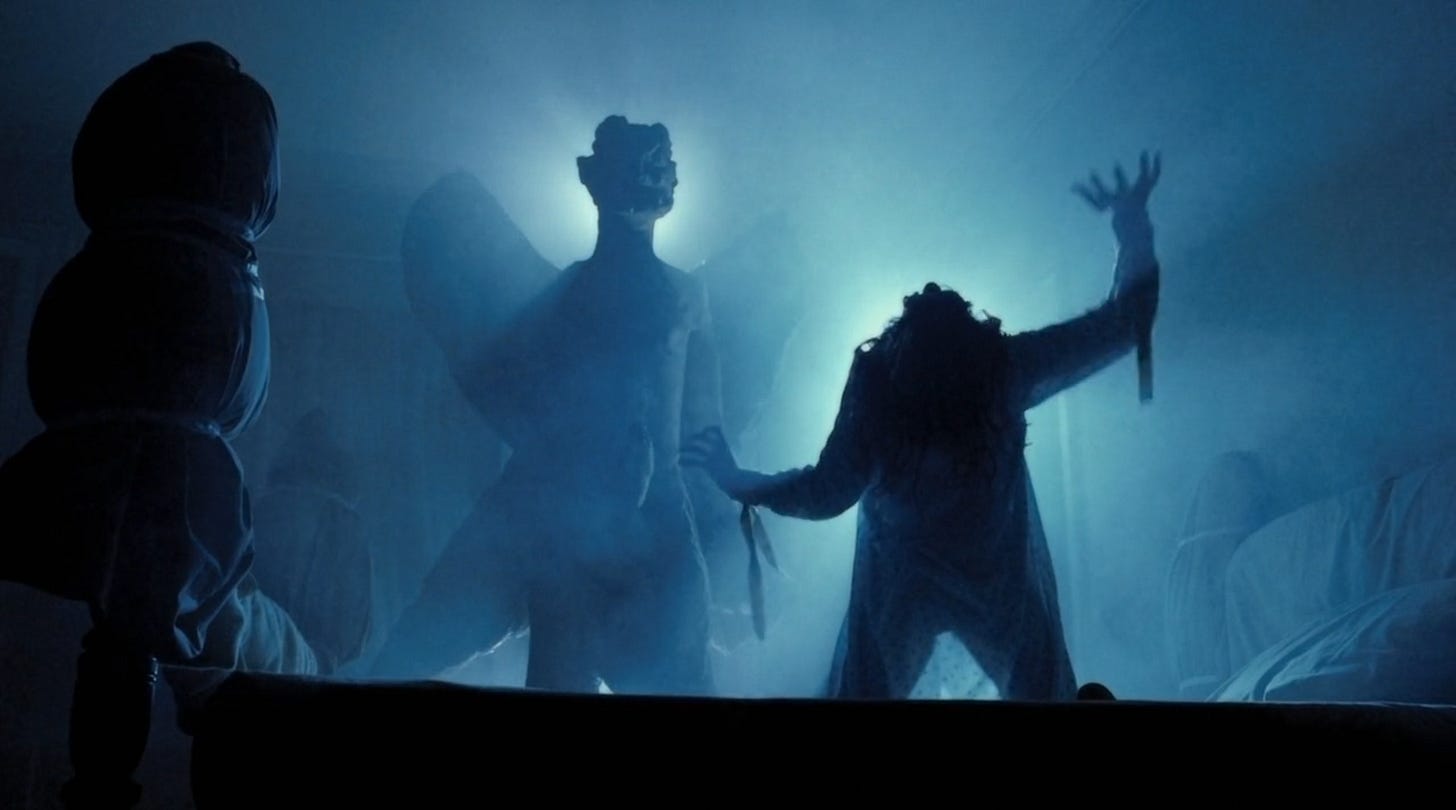Welcome to October, and October streaming — and with it, the three year anniversary of The Spread!

We’re a little late this month, but when you see the scope of the programming, hopefully you’ll have some sympathy for the devil. As per annual tradition, it’s all horror programming this month, honoring spooky season as best we know how: by embracing the goth girl inherent within, first nurtured while watching Bela Lugosi in Dracula (1931) late at night one youthful Halloween. It’s the most wonderful time of the year! Don’t talk to me unless it’s about all things menacing and macabre… I simply don’t have the bandwidth for chatter that’s not predicated on the notion that all things beautiful and holy only have meaning because darkness and morbidity provides necessary contrast.
In addition to our master horror list, we’ve got four five speciality horror programs, including a real monster mash; an Actor’s Showcase honoring Vincent Price, Halloween icon; and the contentious relationship between onscreen macabre and offscreen reactionary politics. “It's as much fun to scare as to be scared,” Mr. Price once allegedly observed. So allow me to do the honors…
Essential Horror: a Spooky Season Tradition
A project three years in the making, this horror list was built from the bones of the very first streaming program I ever did: essential horror films (for Halloween), back in October 2020, at the request of a few friends. Ever since, I’ve cultivated my personal Library of Alexandria from a mix of personal viewing experiences, word of mouth, and a year's worth of regular research for this spreadsheet. Our horror master list now has 500 horror (and Halloween-appropriate) films for you to devour, ranging from the terrifying to the harmless, the highbrow to the lowest brow, from all over the globe and from every filmmaking era. We’ve risen from the grave once more (and are now in our fourth iteration) with refreshed write-ups, tons of new entries, latest streaming info, and all the information you need to make an informed spooky season viewing decision. I promise there is something in here for everyone!
All the Colors Fit to Print: Giallo, A Primer
The red glow of a photography dark room. The whir of a sports car, employed in a chase. A beautiful woman, eyes wide as saucers, paralyzed with fear, her voice a breathy abstraction. These are the sights and sounds of giallo, the horror subgenre forged in the fires of Mount Vesuvius and unleashed on the world in the second half of the 20th century, falling out of fashion by the early 1980s. If the adage goes that all you need to make a movie is a girl and a gun, the Italians will do it with a knife, set it to Ennio Morricone or Goblin, and give it one of the greatest, lengthiest titles you’d never be able to think of (Your Vice is a Locked Room and Only I Have the Key, Strip Nude for Your Killer, and Death Walks on High Heels are some personal favorites). Sexy, stylish, melodramatic, and fucked up, giallo films represent budget horror at its best, finding inspiration in limitation and thriving in the simplicity of the lurid and profane. Italian maestro of horror, Mario Bava, really pioneered the genre, which takes its name (meaning "yellow") from old mystery serials Il Giallo Mondadori, which largely consisted of translations of English-language authors (like Agatha Christie, Sir Arthur Conan Doyle, Dashiell Hammett and Raymond Chandler) and were known for their distinctive yellow covers. Beginning with Black Sunday (1960), his debut, Bava married the beautiful and the macabre, bringing together the gorgeous possibilities of visual storytelling with gruesome violence. Although Peeping Tom (1960) and Psycho (1960) are often credited as the progenitors of the contemporary “slasher film,” Bava brought psycho killer visuals to a dreamy, spooky atmosphere: these aren’t real men with psychological issues, this is abstracted, high-artifice horror. Films like Blood and Black Lace (1964) and Kill, Baby...Kill! (1966) served as further memento mori of the close proximity of death to us all (it walks on high heels, after all!). In their wake, a string of new horror filmmakers emerged, reinvigorating the Italian cinema through the propagation of stylish films stuffed with ultraviolence and sex. After Bava, there are really three definitive auteurs of giallo cinema: Dario Argento, Sergio Martino, and Lucio Fulci. Argento’s terrific 1970 directorial debut The Bird with the Crystal Plumage, a major critical and commercial success, introduced the outright “giallo film” to the world; a deluge followed.
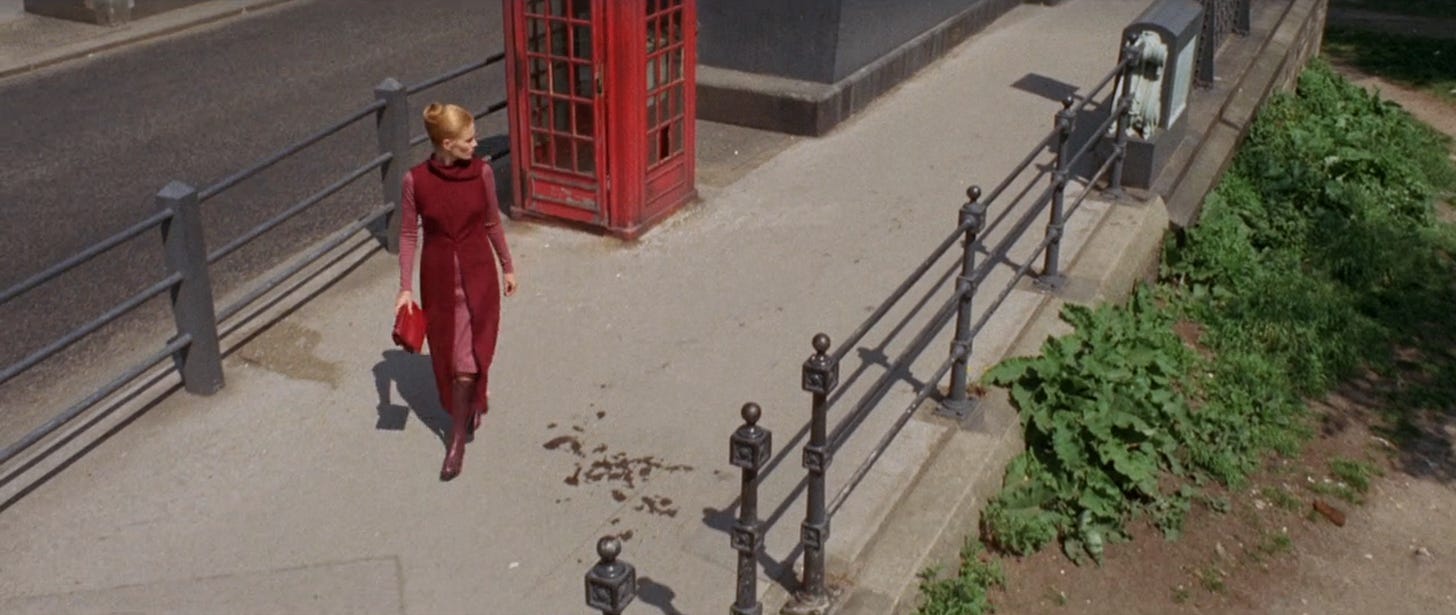
Giallo films generally tell stories of twist-filled mysteries with gruesome secrets: set in lavish European locations, they often star a beautiful woman, or a man in pursuit of a beautiful woman, in peril. Plots are free-wheeling, bordering on nonsensical. Nudity is rampant. Sometimes the source of terror is supernatural, but oftentimes it’s not: a maniac is loose in a beautiful world, tainting it with his sins, hiding in the darkness. They bare all the hallmarks of post-New Wave European filmmaking: on-location shooting, international casts, overdubbed dialogue, and an earthiness you just can’t emulate. If Argento was the giallo film’s David Bowie, then Martino and Fulci were Roxy Music and T. Rex: stylish and innovative in their own right. Martino’s films like The Strange Vice of Mrs. Wardh (1971), Torso (1973), The Suspicious Death of a Minor (1975), and The Case of the Scorpion's Tail (1977) are visual masterpieces: gorgeous invocations of the macabre; Alexandra Heller-Nicholas over at cult distributor Arrow Films calls them “frenzied webs of gaslighting and sexual promiscuity, all stained a glittering blood red that flows from a seemingly endless parade of perversely satisfying murder vignettes.” Fulci, best remembered for his “entrance to hell” classic, The Beyond (1981), pushed body horror even further towards the arthouse. With films like A Lizard in a Woman's Skin (1971) and Don't Torture a Duckling (1972), he brought a startling realism to horror, incorporating groundbreaking special effects from future E.T. designer Carlo Rambaldi, who once had to prove in court that his convincing effects work in Fulci’s A Lizard in a Woman's Skin did not constitute actual animal cruelty, sparing Fulci prison time. There were many other imitators, who burned brightly and quickly, as well as international giallo, such as those found in Spanish cinema. The legacy of the giallo film runs deep: the progenitor of the modern slasher film and the source of considerable controversy over international censorship standards, giallo pushed the horizons of horror, developing the visual language of cinematic ultraviolence and creating the template for what we would (condescendingly) call “elevated horror.” (“A24 horror,” as the kids might say). Italians do it better!
Vincent Price: The Films of the Great Gruesome Gentleman
There’s only one evil laugh that’s so iconic, it’s instantly associated with Halloween: the sonorous cackle belonging to Vincent Price, veteran character actor turned horror film icon, who is still cherished to this day. His appearance on Michael Jackson’s titanic 1983 single Thriller, from the smash album of the same name, capped decades of peddling the macabre to the masses, really beginning with House of Wax (1953) and solidified with The Fly (1958) — though the actor also worked extensively on radio prior to this, including several episodes of hit horror serial Suspense. (He also memorably voiced the Invisible Man, uncredited, in Abbott and Costello Meet Frankenstein, from 1948). Listen to Price speak for 30 seconds and it’s obvious why his erudite bearing and crisp, transatlantic accent (he is from ST. LOUIS) made him such a delicious fit for performance in the horror genre. That rich, lilting voice, textured by a lisp, sounds like it comes from an entity that’s been around the Earth more than just once: calling out to us from the bowels of hell, enticing us into the shadows. He does this thing with his voice where he pitches low, cooing out through pursed lips, that is so distinctive and uniquely him, that it never fails to thrill me. He’s Camp; he’s sex; he’s schlock itself. What is so fascinating about Price, however, is that his status as an icon of mid-century horror was really a second act for the classically trained actor, who began his career on the stage before becoming a contract player at Twentieth Century Fox. He starred in a number of classic films, beginning with Otto Preminger’s essential film noir Laura (1944), his breakout performance, playing one of several suitors of the titular (dead) beauty. He’d go on to appear alongside Gene Tierney in stone-cold classics Leave Her to Heaven (1945) and Dragonwyck (1946), and his filmography is littered with non-horror classics like Michael Curtiz’ The Private Lives of Elizabeth and Essex (1939), Samuel Fuller’s The Baron of Arizona (1950), and Richard Fleischer’s His Kind of Woman (1951). But after The Fly, the path was clear: he teamed up with gimmick king William Castle for House on Haunted Hill (1959) and The Tingler (1959), two iconic schlocky horror films marketed with distinct “gimmicks.” For House on Haunted Hill, it was “emergo,” in which a skeleton on a wire would descend on the theater at the same point that a skeleton appears on film; for The Tingler, it was “percepto,” a vibrating device in the seat that evokes a spine-chilling sensation (a precursor to 4D). In these films, Price cultivated a horror persona that was as irreverent as it was bone-chilling: gleeful, playful, and coy, he’s inviting you to have fun with horror. His collaborations with Roger Corman, beginning with The Fall of the House of Usher (1960), and work for independent studio American International Pictures in the 1960s-1970s reflected this impish version of the Price persona: he’s a serious actor, but he’s seriously fucking with us too.
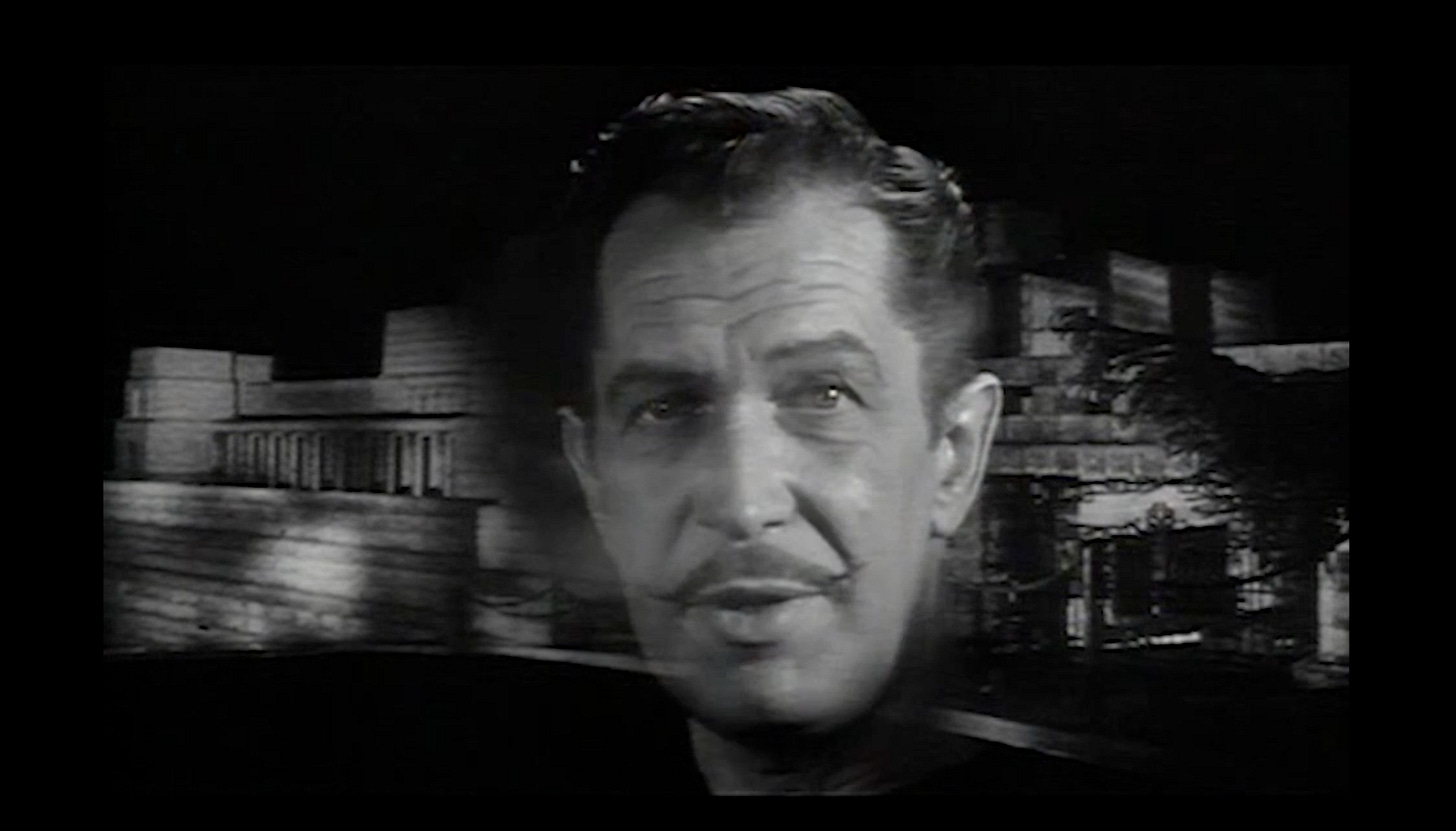
Horror classics like The Masque of the Red Death (1964), Witchfinder General (1968), The Abominable Dr. Phibes (1971), and Theatre of Blood (1973) live and die by Price’s performance, and his satirical blend of theatrical bearing and psychopathic glee. His later life was spent serving as an icon of mid-century horror culture with vocal enthusiasm for its cartoonish charms. His final film performance, as the unnamed, playful creator in Edward Scissorhands (1990), is like a loving final blessing for the next generation of freaks, with Tim Burton claiming the mantle of precocious horror impresario. Vincent Price was poised, verbose, and compulsively watchable… but he never took himself too seriously; publicly laughing at both life and death in equal humor. If there is a beyond, I like to think he’s there staging the most distasteful production of Hamlet the afterlife has ever seen, cackling into the great abyss of immortality. Celluloid heroes never die, after all.
Honey, I Blew Up the Radioactive Tarantula: Creature Features
As long as there’s been a commercial need for cinema, there have been men in rubber suits pretending to be something far more dangerous and monstrous than they are. A giant ape can’t climb to the top of the Empire State Building without the help of movie magic, and monster movies are one of the sacred pillars of the horror genre, resting in King Kong’s panoramic shadow. The 1933 Pre-Code classic employed early practical effects like rear-screen projection, matte paintings, and miniature models, rendered active by stop motion animation (first employed in the silent 1925 film The Lost World) 88 years before the most recent Kong film, Godzilla vs. Kong (2021), crashed into theaters (and onto streaming), cleaning up during an anemic box office season following the COVID-19 pandemic. What is it about giant baddies fighting us and/or each other that is so timeless, even after all this time? Ants, apes, lizards, spiders, snakes, dinosaurs…any manner of nuisance from the natural world can be transformed into something monstrous when suddenly given access to the top of the food chain and able to take revenge on their purported superiors.
“Monster movies” grew alongside film, gaining in sophistication thanks to the groundbreaking special effects work of creative visionaries like Willis O’Brien, Ray Harryhausen, Eiji Tsuburaya, Carlo Rombaldi, Rob Bottin, Rick Baker, and so many more, who made manifest our greatest fears by conceiving the cinematic monsters behind them. Monster movies are really an expression of our anxiety around modern life, particularly after the introduction of nuclear weaponry, the after-effects of which (beyond the obvious) were really not that well known. This paranoia and uncertainty gave rise to the giant creature onscreen, warped or activated by nuclear fallout: a manifestation of the conflict between nature and our modern society. The Earth, in retaliation towards our technological progress, has seemingly sent something from its creation to knock down our cities and climb our skyscrapers. Or, our experiments with destruction have unleashed something the Earth has tried to shield us from: a creature deep below or high above; an egg, a zombie, a prehistoric monstrosity, maybe a creature from beyond its horizons (such as those from the bowels of space). A monster movie is never just about a monster, making them rich texts of study and fun snapshots of the various paranoias and priorities of their respective eras. This program gathers all the best beasties together in one place: King Kong, Godzilla, all the kaiju under the sun, and various other leviathans, behemoths, and assorted freaks of nature (including a giant praying mantis!) Have you ever seen a werewolf with a Chinese menu in his hand? Either way, we’re going to have a lot of fun.
This is no dream! This is really happening!: Satanic Panic on Film (and TV!)
At the end of the twentieth century, America was ripe for another moral panic: seismic cultural changes brought about by the various social justice movements of the 1960s and 70s had activated the so-called silent majority, who were desperate to make America great again with a return to traditional values. The Manson Family’s mantra — as voiced by Tex Watson on the occasion of the Cielo Drive murders: “I am the devil, and I’m here to do the devil’s business” — forever painted a picture of so-called devil worshippers as evil, murderous lunatics in the American consciousness, damning the counterculture alongside it. Satanists are coming into our homes and carving people up — at the behest of the Lord of Darkness — all because we have fallen so far from God’s light and virtue. A calculated campaign for censorship of popular entertainment of all mediums, from music to film to literature, began in earnest under the guise of saving Americans’ children from corrosive influences. In 1979, evangelical minister Jerry Falwell founded the so-called “Moral Majority,” a political organization concerned with the mobilization of Christian Americans to back conservative political candidates, helping to form the New Christian Right. Falwell’s “I Love America” rallies in the mid 1970s-early 1980s peddled the notion that the cultural upheaval of the previous decade had so alienated America from moral decency that politics could no longer be separate from religion. Cultural backlash was in full swing. But by 1980, this fear-mongering about godlessness became a full blown cultural epidemic, with the arrival of the so-called “Satanic Panic,” a mass hysteria caused by superstition, paranoia, and fear of perceived threats to the American homefront. Suddenly, stories of child sexual abuse at the hands of secret Satanic cults were everywhere, thought to have begun with the publication of Michelle Remembers. The 1980 memoir, coauthored by a “psychiatrist” and his “patient” (who later married), makes reference to the patient’s “recovered memories” of abuse at the hands of the Church of Satan (here’s a clip of the couple telling their tales on UK television at the end of 1980). Actually, all of the book’s claims were total fabrications gleaned from popular entertainment. Promotion for the book sparked widespread cultural panic alongside a wave of tabloid stories about similar happenings in local communities all over the U.S. In these incidents, young children would report being kidnapped at night and taken to violent and/or sexual rituals by members of the community (neighbors, daycare workers, even sometimes their own parent). In nearly all instances, there was no evidence to substantiate these incredible stories, which were often fabricated or coerced through the (since disproven) psychiatric practice known as “recovered-memory therapy,” which aimed to “uncover” suppressed and forgotten memories in children (but which actually implanted false ones). A number of innocent people were incarcerated or ostracized because of these lies — which only made it that much harder to prove and prosecute actual child sexual abuse — with the children too young and/or confused to understand the full implication of their actions; whole communities were torn asunder by suspicion and outlandish accusations of coordinated rings of Satanists. You might think of it as collective hallucination, born out of fear-mongering about devil worship that began in earnest with the organizing of the Christian Right in retaliation to the high profile reached by occult worship in the countercultural era. There’s another popular word for it: a witch hunt.
This cultural backlash would have long-reaching effects on popular entertainment. In 1985, Tipper Gore launched the Parents Music Resource Center, which published a list of offensive songs by popular artists — the so-called “Filthy Fifteen,” — in an ongoing effort to censor and/or suppress music objectionable to the Moral American Way, which would eventually lead to the Advisory Warning sticker system. Two heavy metal songs on that Filthy Fifteen list (Mercyful Fate’s “Into the Coven” and Venom’s “Possessed”) were included for their alleged advocacy of “the occult.” Slapping a music with a warning label because it “promotes” the occult! (not dissimilar to what happened with film over in the U.K., where the Director of Public Prosecutions assembled a list of “video nasties” that were supposedly harming the country’s children). How could such institutionalized superstitiousness happen in a modern, allegedly healthy society? Fear. Ephesians 6:11-13 tells us to:
“Put on the whole armor of God, that ye may be able to stand against the wiles of the devil. For we wrestle not against flesh and blood, but against principalities, against powers, against the rulers of the darkness of this world, against spiritual wickedness in high places. Wherefore take unto you the whole armor of God, that ye may be able to withstand in the evil day, and having done all, to stand.”
At Sunday school growing up, they meant for us to take that verse quite literally: suit up to battle Satan. Arm yourself against him. He is everywhere. You are not safe. He is everywhere. Satan has always been a popular subject for artistic interpretation, but the movies made him so real. Decades of entertainment starring The Devil, and the freaks who pledge fealty to him, only made the boogeyman that much scarier. Those false tales of Satanic abuse are informed by cinematic visuals of soul-based suffering: poor Linda Blair, prostrate with possession in William Friedkin’s The Exorcist (1973); Mia Farrow, eyes bugging out of her head at the sight of her child in Rosemary’s Baby (1968); little antichrist Harvey Stephens, watching coldly as a maid throws herself to her death in his name, in The Omen (1976). Satan really is the ultimate scapegoat, because — just as it’s comforting to conceive of a benevolent presence watching over man — it’s helpful to think of a big bad entity that explains the unbelievable amount of pain and suffering that exists in the world. Truly, he’s the ultimate baddie (and the ultimate architect of man’s propensity towards evil). So this spooky season program concerns itself with filmic depictions of The Devil (and Satanic worship throughout the years): Satanic cults, possession, the occult, and the Antichrist. We’ve got Greenwich Village Satanists, Anton LaVey, silent-era Satanic Panic, portals to hell, pastiche, Faustian bargains, and so much more!
BONUS! Companion Program! From the Vault: 'BAN VIDEO SADISM NOW': Moral Panic and the Legacy of the "Video Nasties"

Few things are as illuminating for scholars of social and cultural analysis than a moral panic, which is an easy way to trace the priorities, messaging, and shifting cultural values of a time period…In the United Kingdom in the 1980s, an all-too-familiar pattern of blame emerged against the burgeoning (unregulated) home video market, which allowed for a greater distribution of content that would have been more heavily regulated in theatrical release. Following a successful campaign by moralists, including the National Viewers' and Listeners' Association and the yellow journalism of U.K. tabloids, which dubbed these genre films "video nasties," or films that allegedly inspired violence in children, the Director of Public Prosecutions produced a list of 72 titles declared to be in violation of the Obscene Publications Act 1959, as well as an additional list of 82 films that could be considered obscene, though not prosecutable. Never mind that the United Kingdom was reeling from the gutting of social programs, privatization of industry, violent labor strikes, and collapse of the job market due to Thatcher-era policies of "deregulation," which had a devastating impact on the country. Something must be fueling civil unrest and rising crime, so naturally, probably, it's because kids are getting eyes on Abel Ferrara's Driller Killer (1979). Tabloids' successful stoking of moral paranoia included directly linking actual violent events to the supposed influence of video nasties that were consumed, to the point that the U.K. eventually introduced the Video Recordings Act of 1984 (perhaps a bit too on the nose), which mandated that home cassettes must receive a seal of classification by the Home Office before distribution. Films that were dubbed too violent were denied a seal, in several instances leading to the effective banning of films, as well as the prosecution of several titles. Some of those video nasty titles might surprise you: Sam Raimi's Evil Dead (1980), Andrzej Żuławski's Possession (1981), Wes Craven's The Last House on the Left (1972)....indelible works of horror that were effectively censored in the name of "public decency." The others...well. Even the lowest dregs are a fascinating window into post-Manson Family paranoia and the relative freedom of independent film production at the time. As you might imagine, these restrictions had a significant effect on the distribution of certain titles long after the wave of moral panic waned. Many of these titles are still banned on technicalities, or are generally unavailable today; others are only really discussed in cult circles because of the notoriety of the video nasty label, which helped gain them further attention by scholars. Why would a government fanatically obsessed with deregulation and the endless possibility of the free market pass sweeping legislation to suppress commercially successful content they find objectionable? In an era of political bombings, strikes, labor/race riots, and general unrest due to widespread unemployment, why might you want to control the depictions of unfettered violence, revenge fantasies, and vigilante justice that define horror cinema?
That’s all I’ve got for October. Keep safe, stay kind to yourself and others, and have a fabulous Halloween! And remember my annual PSA: if you’re listening to Love Potion No. 9 for spooky season, be sure to choose the version by The Clovers. See you next month!





